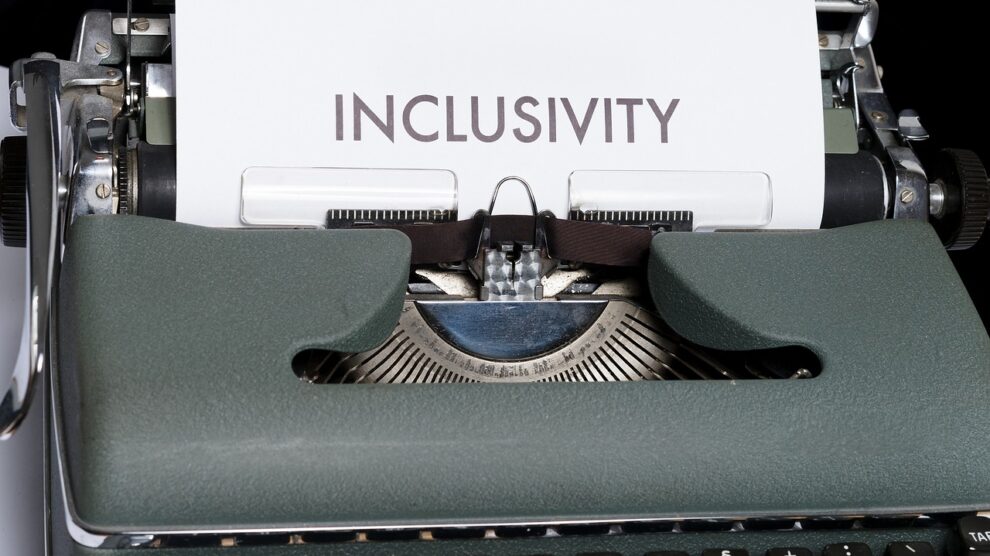“Hey, guys.” “I gave my letter to the mailman.” “Welcome, ladies and gentlemen.” Gendered words are everywhere in the English language; you’ve probably used them several times today without even noticing. The issue with using gendered language as the default is that it often ends up excluding someone.
If you’re talking to a specific person, using correctly gendered terms can be a personal touch. But in the wider world of marketing companies like Oneupweb, we want to include as many people as we can in our target audiences. Writing inclusively is vital to avoid alienating groups.
Here’s how you can start being more gender-inclusive in your own writing.
What Does Gender-inclusive Mean?
Gender-inclusive language means communicating in a way that includes all genders wherever possible. If a term refers to a group rather than a specific individual, gender-inclusive language leaves you space to include all possible group members.
Let’s walk through an example. You’re writing a description about the duties of sales representatives for a company handbook. You might want to note how impressive Sean is as a salesman – it’s a simple switch. Opting for a more inclusive team, such as salesperson or sales representative, includes and empowers everyone to follow Sean’s example.
Say It Right
If a noun defaults to masculine (which many do), try to think of an alternative. Gender-inclusive language examples include writing “server” instead of “waiter or waitress,” using “partner” or “spouse” to talk about significant others and opting for “synthetic” or “artificial” over “man-made.”
Gendered Language in Search
In digital marketing, and especially SEO, we run into gendered language all the time. Keywords like “pants for men” or “bicycles for women” make their way into articles, blogs and sales pages. But it’s not just surface-level male and female language.
A study found that adding “cool” to a clothing search query (i.e., “cool t-shirts” or “cool tennis shoes”) returned mostly men’s clothing. By contrast, adding “cute” returned results for women’s clothing. So, even the adjectives we assign to certain products have in effect become gendered, perhaps unwittingly filtering the results, products and information we’re being served.
Why Writing Inclusively Matters
At its core, using inclusive language in writing is simply the right thing to do. Recognizing a diverse range of gender experiences avoids alienating people who are frequently sorted into the “other” category. Showing compassion for people who are different from you is important simply because they’re people. As marketers, inclusivity deserves much the same prioritization as website accessibility.
The Benefits of an Inclusive Marketing Strategy
Beyond the humanitarian reasons to write inclusively, it’s simply a sound business strategy. Gen Z, a growing force in the market, is more likely to respond well to diverse advertising than to non-diverse options. A 2020 Microsoft report shows that 70% of their participants trust a brand more if their ads include diverse representation. This trust turned into a 23-point lift in purchasing intent for companies displaying diverse ads, whether or not the purchaser saw themselves represented in the ad.
The same report showed that members of Gen Z will pass on a company if it doesn’t match their ideals; 48% of participants reported that they’d stop buying from a brand that didn’t represent their beliefs. With Gen Z being an ever-growing, ever-more powerful market sector, pleasing them with inclusive messaging only makes sense.
4 Ways to Include Diversity and Inclusion in Marketing Copy
Committing to gender-inclusive language may sound easy, but what does it look like? Use these tips to guide your writing:
- Balance SEO and inclusivity. Until there’s a massive shift in how we use language, people will still search for “holiday gifts for women” and “men’s polo shirts.” You don’t have to avoid targeting these terms altogether, but make an effort whenever possible to broaden your audience. The more we use inclusive language, the more search engines like Google will learn to target it.
Example: These men’s button-up shirts are a great gift for anyone who enjoys masculine fashion.
- Identify and limit unnecessarily gendered language. Many industries don’t need to include gender as a matter of course, including marketing. Use “they” as a single-person pronoun and include gender-neutral terms like “spouse,” “user,” “homeowner,” “technician,” “specialist” and more whenever possible.
Example: A homeowner should trim their bushes in the late winter or early spring.
- Check your blind spots. It’s hard to know what we don’t know; get someone else to read over your writing and help you compile a list of habits you can improve. After you’ve asked who you’re writing for, ask who you’ve left out of your audience. For example, many trans men still benefit from “women’s” health centers. Focus on your core audience but include references to smaller groups who are also among your readers.
Example: At Example Women’s Health, we employ care professionals who have experience with a range of bodies. Our spaces are trans-inclusive, and we offer all applicable services to trans-masculine and nonbinary people.
- Take time to do a research deep-dive. Whenever possible, get comments from the community you’re writing about. If your writing team is all men, look into hiring some women either full-time or as sensitivity readers. When writing about trans issues, find someone from the specific community you’re covering (trans men, trans women, nonbinary people, etc.). Someone from the community will always have more thoughtful insights than someone observing from the outside. When first-hand accounts are hard to find, do as much other research as you can. Keep respect as a main goal and be prepared to adjust if you get feedback later.
Example: Many Central and Latin American members of the LGBTQ+ community dislike “Latinx” as a gender-neutral substitute for “Latino,” as it ignores their linguistic history for a more Anglo-centric solution. Community members have put up alternatives like “Latine” that honor both their language and gender-neutrality.
Gender-inclusive Writing Is the Future of Written Media
Now is the time to build gender-inclusive messaging into your organization’s guidelines. Position your team to tap into a growing demand for diverse content. Inclusivity is already mainstream; be prepared as it shifts from a nice-to-have bonus to a necessity for quality marketing content.





